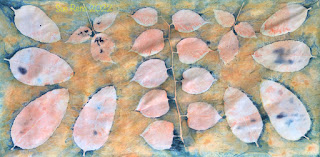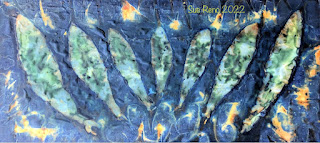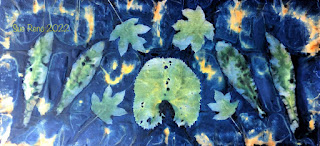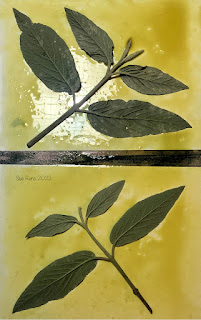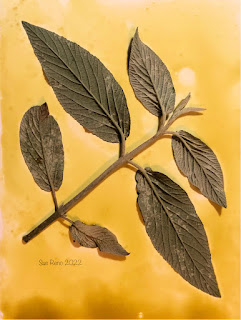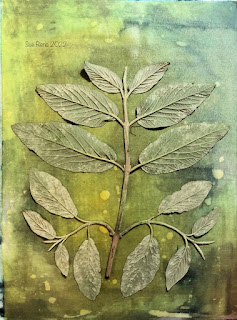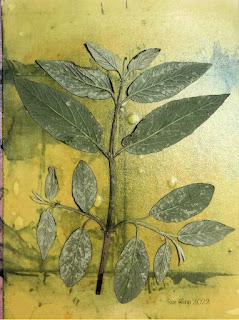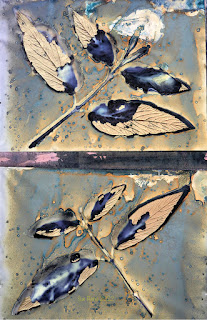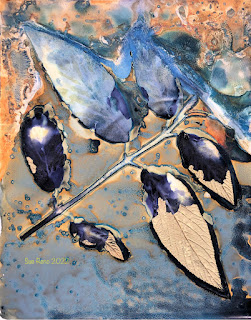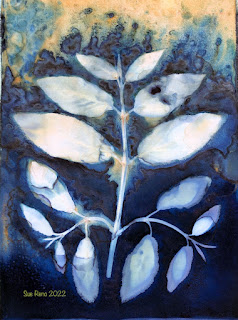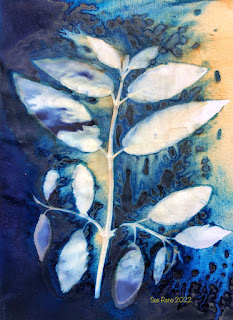On the solstice I prepared two prints, both with the same leaves - milkweed, Japanese knotweed, box elder, and some bonus black locust on one - both on cotton sateen, same blend of cyanotype chemicals with a splash of Solarfast. I put them out within 15 minutes of each other on a warm, evenly sunny day.
After a long exposure, but before rinsing, they looked like this. One is a bit less dramatic, perhaps, but both pretty standard at this point.
And here are the finished prints. The first one is a bit pale, with dark outlines.
The second one is pale all over, yet still well defined. It's a bit unlike any result I've had before, and I think it's just lovely.
So why are they so different? The only variable is that I ran out of sheet plastic to cover them, so on the second one I used a slightly thinner gauge of plastic sold as a painting drop cloth. But why would that affect how the chemicals reacted? More experimentation is obviously needed, to see if it can be replicated or it's just a happy accident. So on to the next printmaking session!
Thanks as always for reading! You can also follow along on your platform of choice:
Facebook page:http://www.facebook.com/suerenostudio
Twitter feed: http://twitter.com/suereno
Tumblr: http://suerenostudio.tumblr.com
Instagram: https://www.instagram.com/sue_reno_studio/
Twitter feed: http://twitter.com/suereno
Tumblr: http://suerenostudio.tumblr.com
Instagram: https://www.instagram.com/sue_reno_studio/





